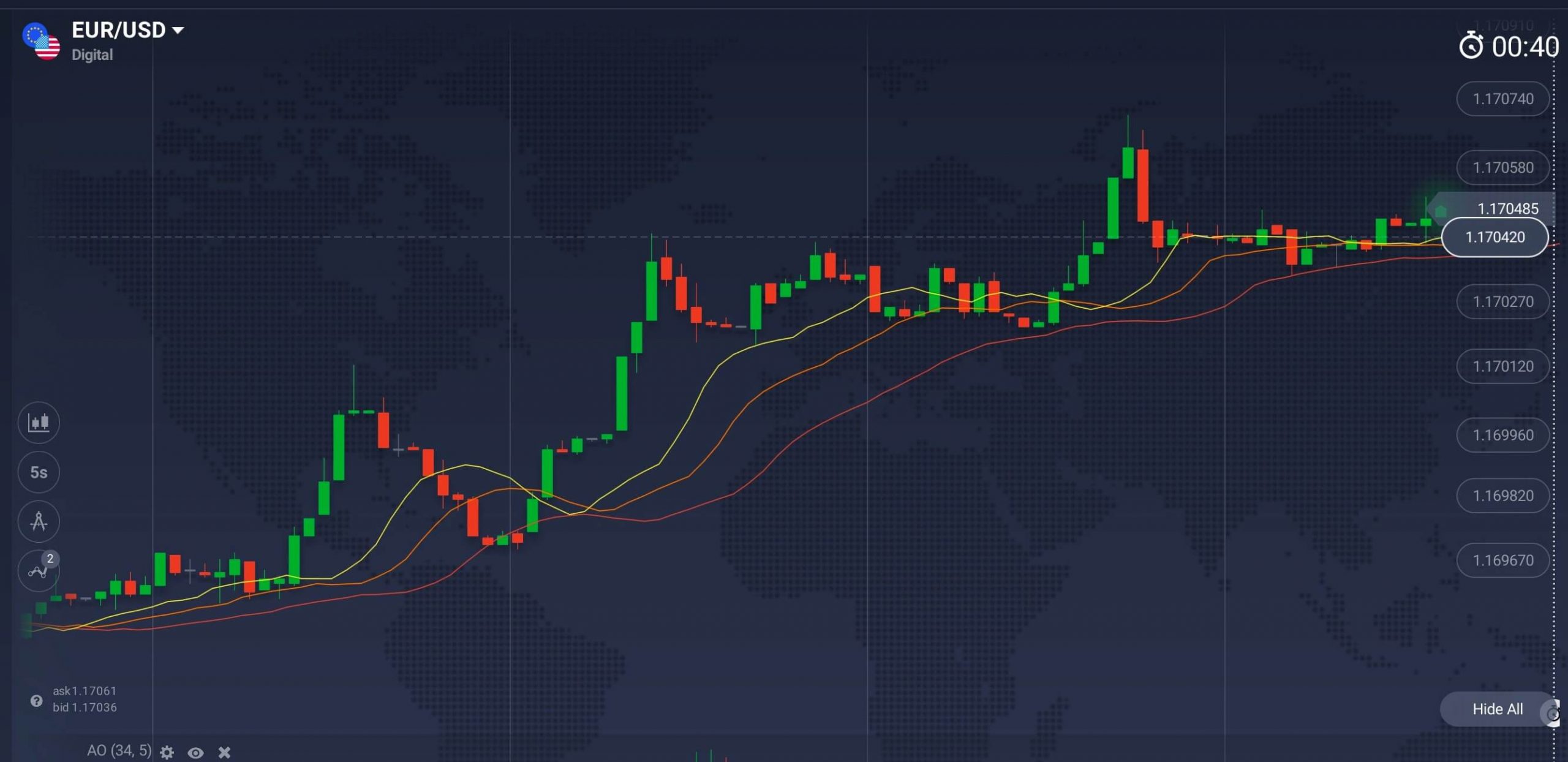Trade With Donchian Channels
Donchian Channels are a volatility indicator that can be used both on its own and as a part of a more complex trading system. This indicator can help you determine optimal entry and exit points, as well as provide an insight into periods of high and low volatility.
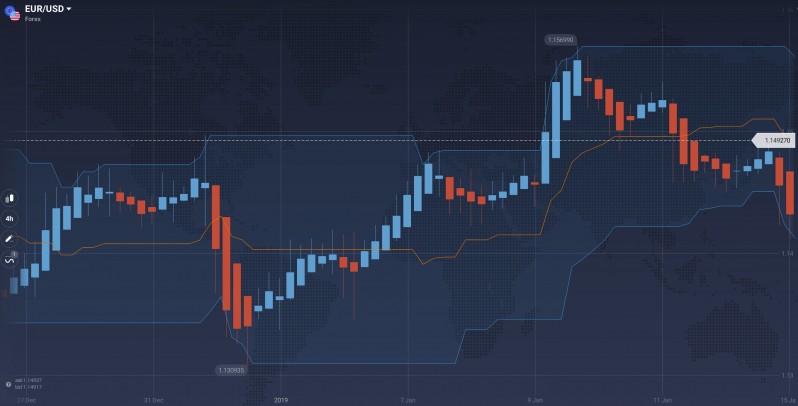
How do they work?
Donchian Channels consist of three lines: 1) The upper one outlines the highest price observed over a set period of time and stays at the same level until a new high is met. 2) The lower line works in a similar fashion. It reaches the minimum value as the price goes lower and stays at the same level until a new minimum is met. 3) The middle line, as the name suggests, is located in-between the two. In order to make the indicators actually look like a channel, the area between the upper and lower lines is shaded.
How to apply in trading?
Why would a trader want to know (and get visualized) the maximum/minimum price in the form of a line when it is already available on the price chart itself? The thing is, Donchian Channels will help you identify the relation between the current price and the trading range over a set period of time. The latter can be adjusted when setting up the indicator. Just like Bollinger Bands, this indicator will help you realize how bullish or bearish the market currently is. The upper line hints at the buying pressure, the lower line — at the selling one.
There are several trading strategies that involve the use of Donchian Channels.
First, the combination of upper and lower lines can be treated as dynamic support/resistance levels. In this case, traders would expect the asset price to bounce off the upper line during a bullish trend and from the lower line during a bearish trend. Note that during a strong trend, no matter whether positive and negative, candles will consecutively close at higher/lower levels, thus pushing the line to the direction of the prevailing trend. When using this strategy, traders could open a ‘BUY’ position when the asset price is above the middle line and a ‘SELL’ position, when the price is below the middle line. Consider receiving a confirmation to the signal this indicator is sending before opening a deal.
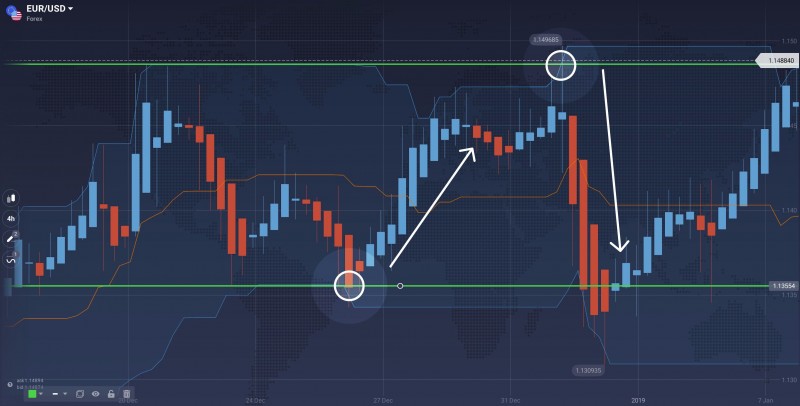
Secondly, Donchian can be used in combination with MACD. Here, Donchian Channels will work just as described above. MACD, as you probably already know, can send buy and sell signals of its own. When the fast MACD line crosses the slow MACD line from above, an upward trend can be expected. When the opposite is true, a downward trend can be expected. In other words, MACD is used as a confirmation for Donchian signals.
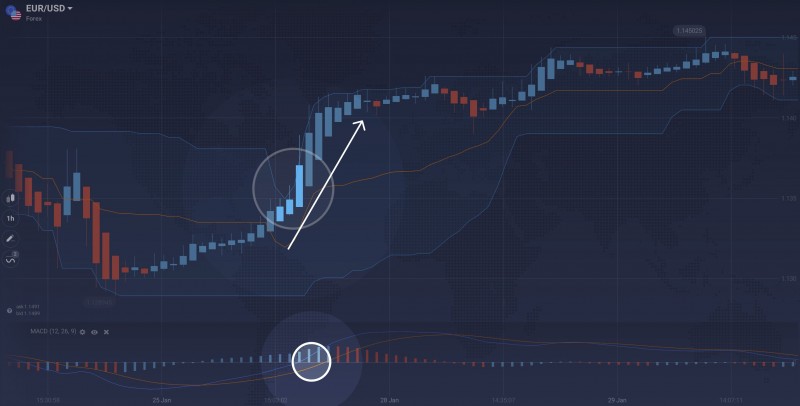
Finally, Donchian Channels can also be paired with a Volume Oscillator. In this case, Volume Oscillator doesn’t provide buying or selling signals but hints at optimal entry points. When the asset price is above the ALMA middle line and the trading volume is growing, upward movement can be expected to continue. When the asset price is below the ALMA middle line and the trading volume is growing, downward movement can be expected to continue.
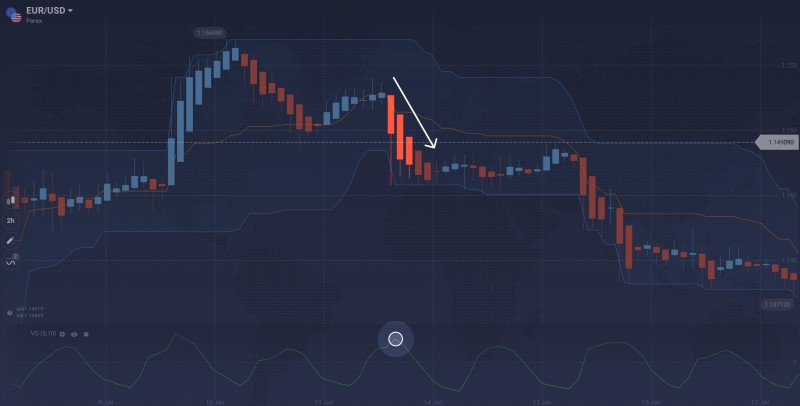
Note that none of the above-mentioned strategies is capable of providing accurate signals 100% of the time (just as any other trading strategy). It is, therefore, advised to develop a trading system of your own and test strategies on a demo account before you put your money at stake.
How to set up?
Donchian Channels can be found under the ‘Volatility’ tab after you click the ‘Indicators’ button in the bottom left corner of the screen. There are no settings that you can adjust except for the outlook of the three basic lines and the color of the filling in-between them. The default setting for the period is 20, but it can be changed according to your needs. Note that the behavior of the indicator will change depending on the number of periods that you choose.
